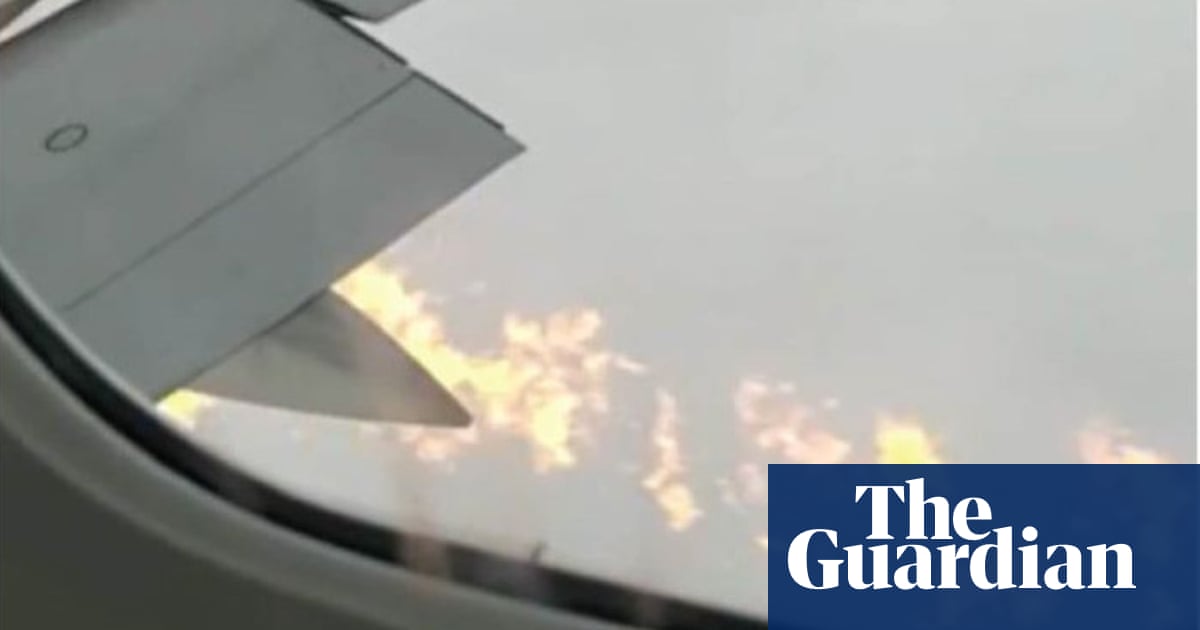Boeing faces fresh questions about the safety of its aircraft after an engine fire on a transatlantic flight from Edinburgh caused an emergency landing soon after takeoff.
Flames were seen by passengers briefly shooting from the engine of a Delta Air Lines 767 soon after it took off for New York in February last year, after a turbine blade broke off during takeoff.
The flames subsided while the plane was airborne but it made an emergency landing at Prestwick airport south of Glasgow, where ground crew noticed fuel leaking from the plane’s right wing.
The Air Accidents Investigation Branch, the UK government agency that investigates aviation safety, has written to the Federal Aviation Administration in the US asking it to take action with Boeing, which has its headquarters in Virginia.



Boeing doesn’t make engines.
Nobody is accusing Boeing for the turbine failure. They are questioning Boeing’s drain tube track design failure. Source
Doesn’t seem to be major issue there either. Above is a quote from the AAIB report. They’re talking about an already redesigned and upgraded drain this plan had installed in 2012. It was found the redesigned part performed better than required. Even when damaged on purpose before testing. The recommendation here is more like hey FAA maybe you should update the test requirements. 20 minutes or 2 minutes of holding up while shit is going wrong might not be enough.
https://asn.flightsafety.org/wikibase/308139
But even with all this going on the engine was making thrust. Pilot was just worried about flying across the Atlantic with a vibration they noticed was getting worse after 20 minutes in the air. They suspected but didn’t even know the engine was blown until back on the ground. The fire was happening in the exhaust stream and not within any part of the plane itself.
Yup, most engine manufacture is undertaken by specialists. As a good example, Rolls-Royce is an airplane engine company that sometimes makes cars as publicity stunts.
HOWEVER.
It’s not just about who makes engines. Aircraft are meant to last a good 30 years in service and you can’t just ask some schmuck to clean it for $7.50 an hour and call that maintenance. Maintenance is extremely skilled work that tends to be operating under horrible time crunches, especially if a part is suspect and needs to have a plane partially taken apart so it can be changed for a fresh one- a plane that might be due to fly again tomorrow. Maintenance that needs that sort of knowledge tends to have some involvement with the parent company who built the planes, or is even contract work for them.
Boeing is rather notorious for being willing to put the schedule before safety- we’ve seen that in a lot of other accidents. I would absolutely believe that a Boeing manager skimped on engine maintenance because someone in the chain of command said “Get that plane out of the maintenance hangar today or you’re fired, and damn the safety regulations.”
But, that’s just my industry knowledge. The actual circumstances could be way different, so let’s go read the article.
OK, checking out the article, actually it seems totally innocent on the maintenance side of things- there was a turbine blade fracture during flight. Turbines are generally very reliable but it’s a gargantuan pain in the ass to test those blades because they’re crystalline structures, so a fracture goes from nanoscopic to taking out the whole blade all at once. I wouldn’t expect maintainers to catch that.
The criminal part is actually way more interesting and concerning.
Civilian aircraft are built to be safe. I mean REALLY safe. Every system has a redundant (backup) system you can switch to if that system goes down and a way to isolate a damaged system. Planes can fly on only one working engine, or even safely glide down to the ground if they have no engines. We literally blow some engines up in their final stages of testing to make sure they can’t blow up hard enough to take the wing out. Regulations demand it.
So that’s why this is a criminal case. Because after that engine blade came loose and hit the wing, it ruptured a fuel line…
In an aircraft that was designed in compliance with regulations, while this would still be be cause to turn around and land the plane, it shouldn’t actually be a safety problem at all. Just isolate the damaged system and switch to the redundant one. And they didn’t have the ability to do that. Meaning that their aircraft design itself is likely out of compliance with regulations and doesn’t meet the minimum safety requirements to have civilians on it. Which is… honesty way weirder, because who the hell signed off on this thing if it had a design issue like this?
Boeing.
The FAA has been allowing them to self-certify some safety analyses. I don’t know if it was this model, or this kind of certification, but the FAA has definitely not been doing a thorough job.
Well, except for the wings. And the removedpit. And the fuselage. And its accompanying door plugs
Are you daft? Why do you think it has TWO wings and TWO doors? And clearly you’ve never been invited to the under removed pit, where they keep plugs fit for any hole.
(is joke don’t bite)
Not sure about the commercial planes, but some planes have a redundant wing.
https://theaviationgeekclub.com/time-israeli-air-force-f-15-baz-landed-one-wing-missing/
What page did you see those details on in the report? I skimmed it between meetings and will look again later.
They technical don’t make airframes or doors either (and still don’t until their buyout of their supplier goes through).
It’s funnier than that. Spirit was Boeing. Before dipshit Jack Welch copycats spun it off. Now they’re buying it back.